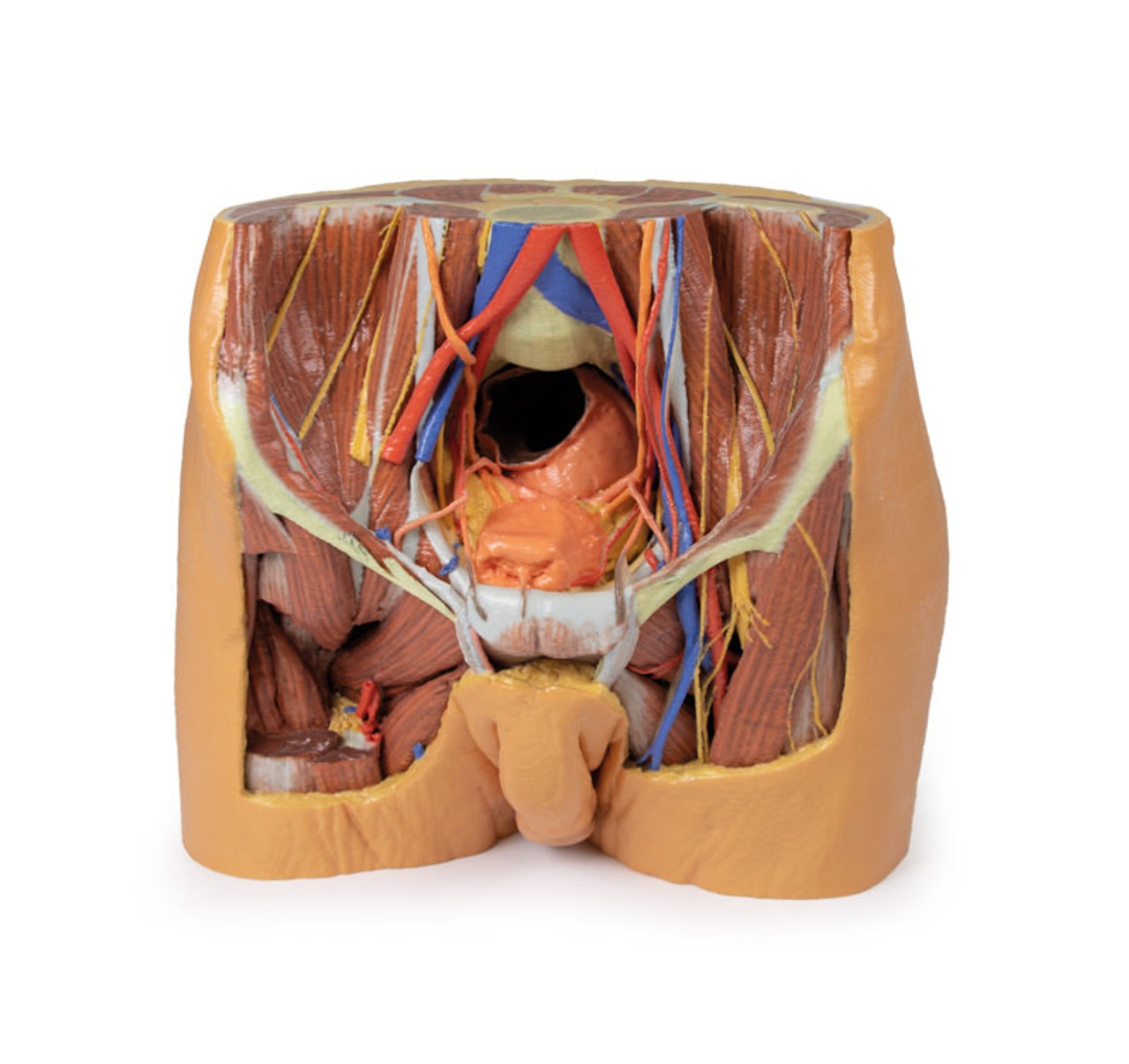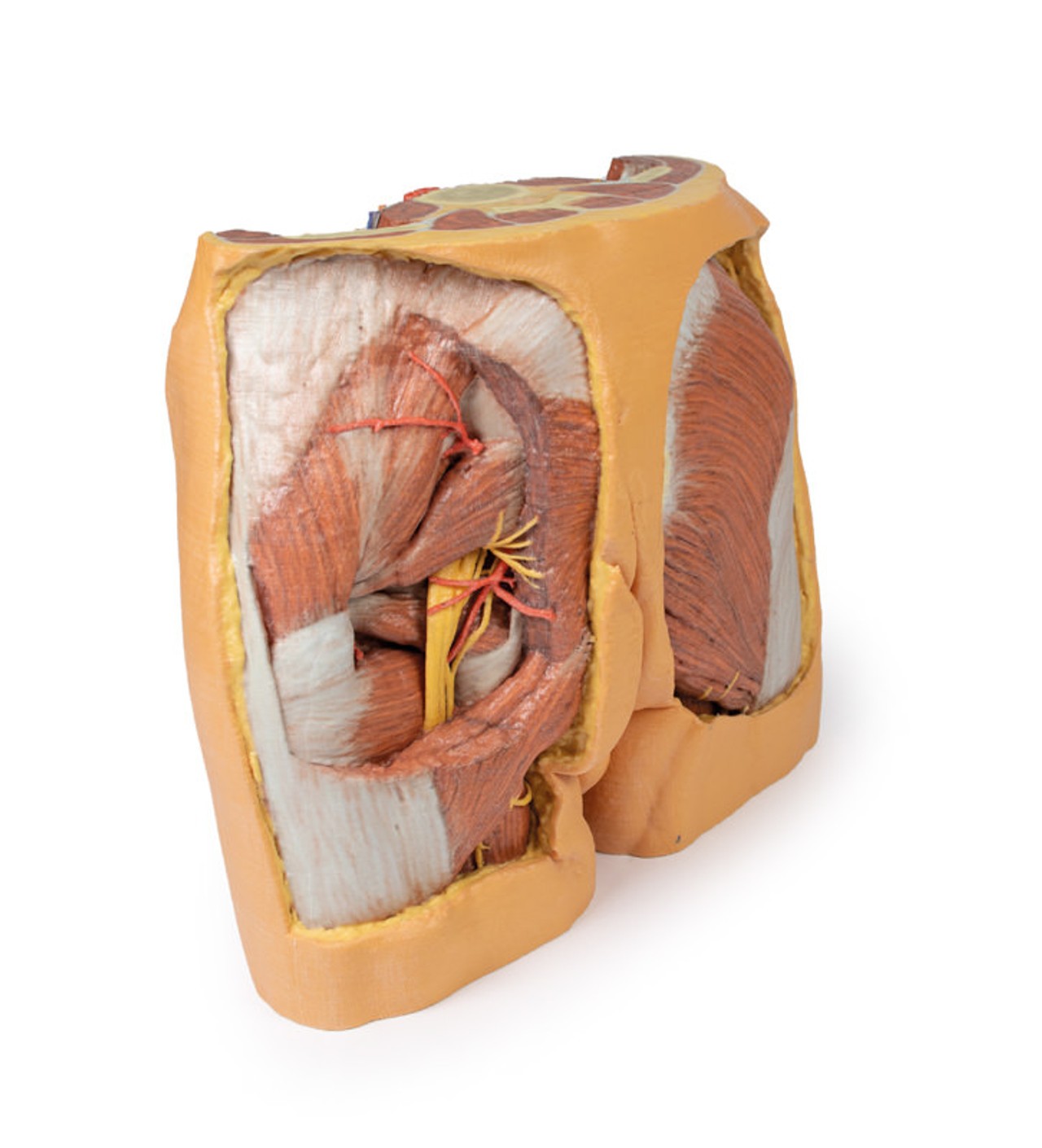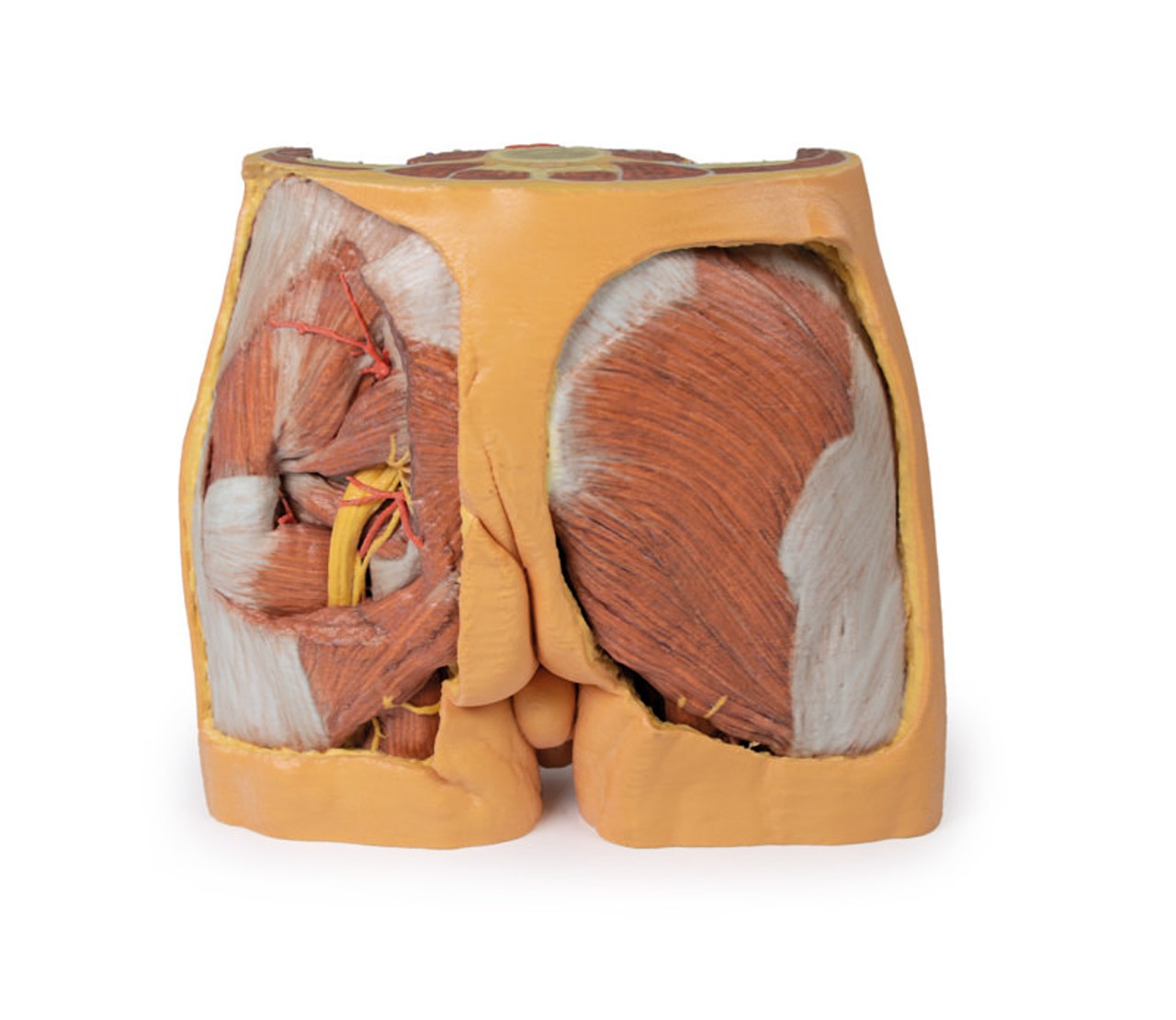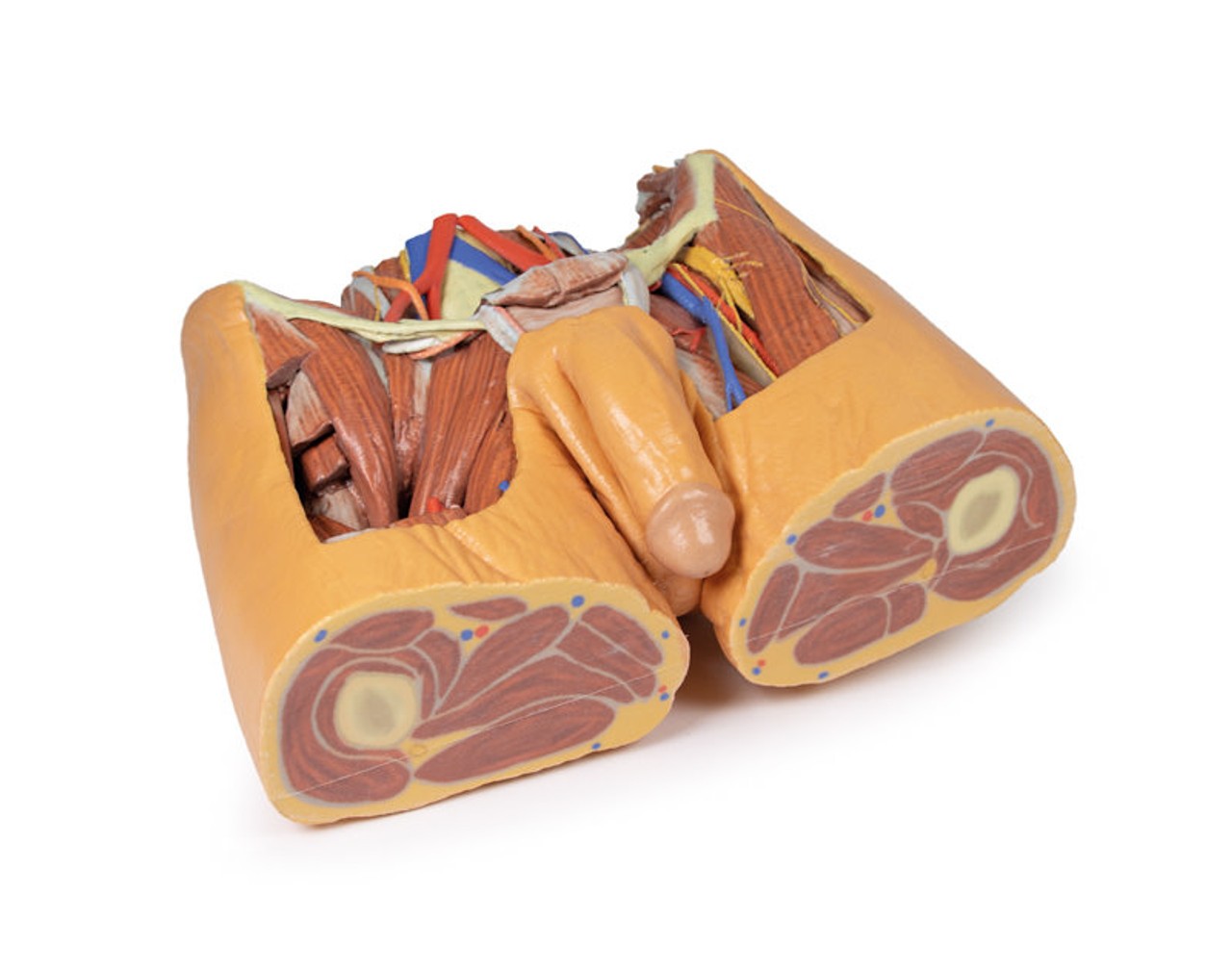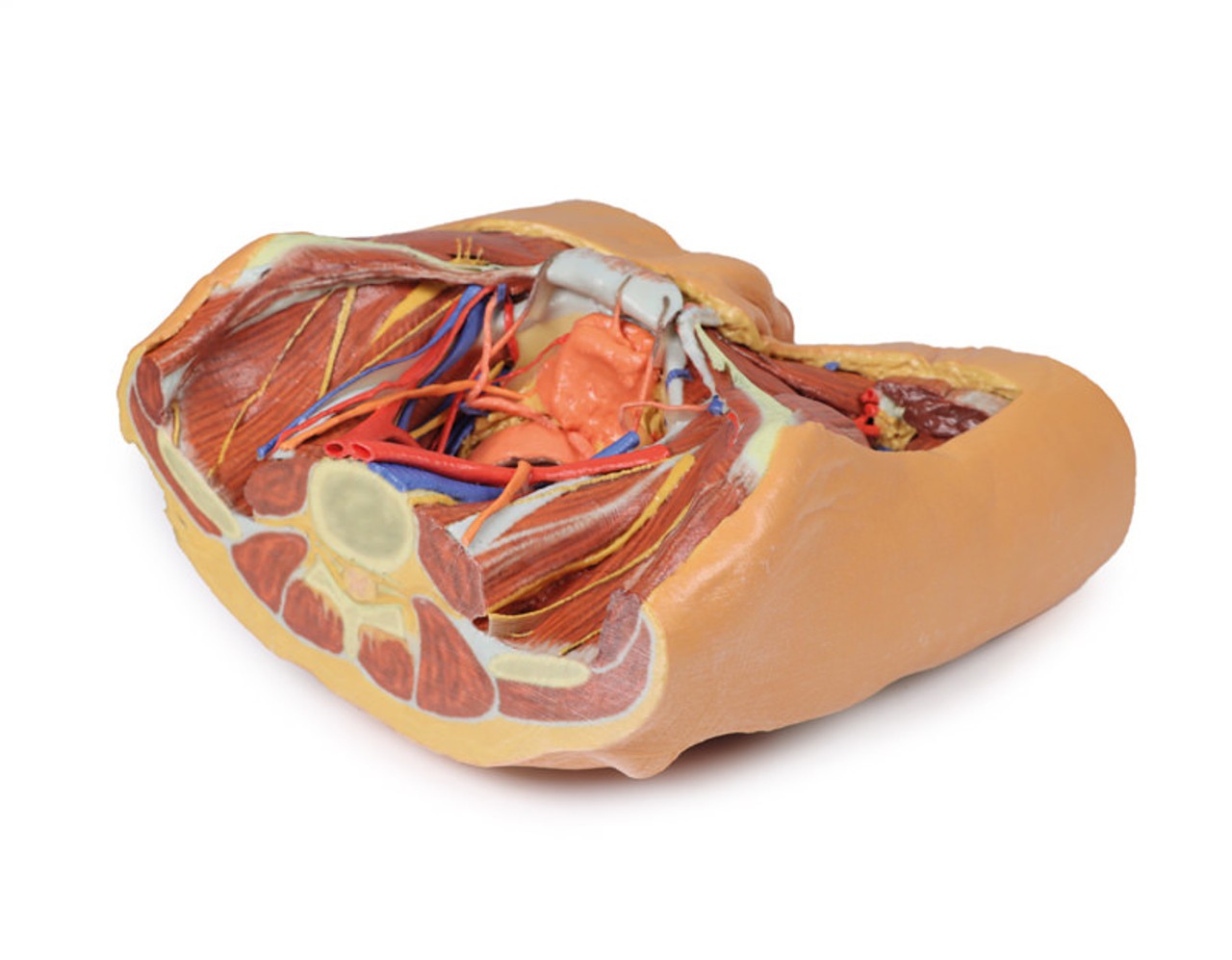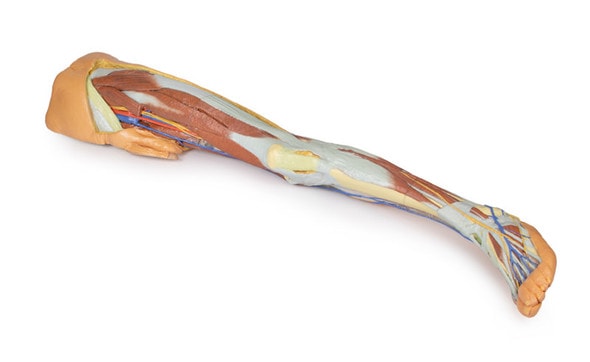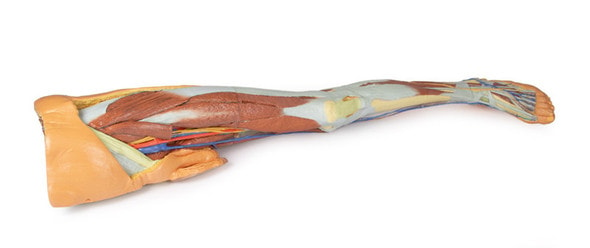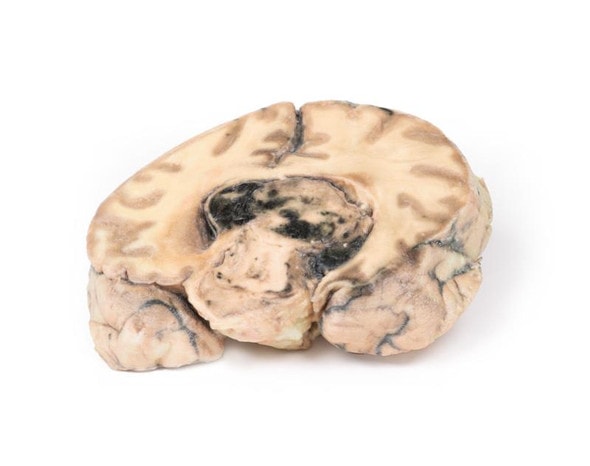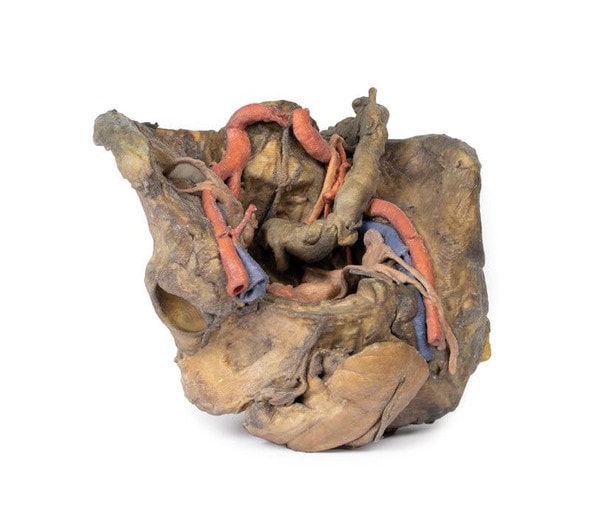- Home
- Anatomy Models
- Reproductive System Anatomy Models
- 3D Printed Inferior Portions of the Male Pelvis
Description
At the forefront of medicine and technology, we are proud to offer these incredible, uncompromised replicas of human anatomy. Using the latest 3D printing technology and materials available, this model is an exact replica of a human cadaver, brought to "life" by extensive medical scanning and manufacturing technologies. Over are the days of using ethically questionable cadavers, the mess of hazardous preservation chemicals, and the inaccuracies of plastinated models that often over-enhance anatomy for display, not realism. See the future, and the beauty, of real human anatomy with these incredible anatomical replicas!
This multipart 3D printed specimen represents the inferior portions of our larger posterior abdominal wall print (MP1300) that displays the inferior posterior abdominal wall, the pelvic cavity and the proximal thigh (including the gluteal regions and femoral triangles).
Lower posterior abdominal wall and false pelvis: The specimen is transected at approximately the level of the L2/L3 intervertebral disc. The common iliac veins unite to form the inferior vena cava. The common iliac arteries are close to uniting at the top of the print. The iliacus and psoas muscles are easy to identify, the latter has a prominent psoas minor tendon. They can be seen to unite as they pass under the inguinal ligament. The nerves of the iliac fossa (from superior to inferior: ilioinguinal nerve, lateral cutaneous nerve of thigh, femoral nerve ) and their course is clearly visible, as is the genitofemoral nerves on the surface of psoas muscle. The ureters also descend on the superficial surface of the psoas and cross from its lateral to its medial border. They enter the pelvis at the bifurcation of the common iliac arteries into external and internal arteries. The external iliac arteries and veins running along the pelvic brim are clearly visible, as is the vas deferens crossing the brim from the deep inguinal ring to enter the pelvis.
True pelvis: The pelvis is dominated by a dilated rectum, dissected to demonstrate a transverse fold. The bladder is seen anteriorly in the pelvis (with the obliterated urachus passing towards the anterior abdominal wall) and the ureters can be seen entering the bladder wall posteriorly. The branches of the internal iliac artery can be clearly seen, with the obturator exiting the pelvis through the obturator foramen with its accompanying artery and vein. There is an accessory obturator vein crossing the brim in addition to the usual branch which drains to the internal iliac vein. The obliterated umbilical arteries are seen exiting the pelvis anteriorly and ascending on the anterior abdominal wall (reflected anteriorly).
The femoral triangle: On the right the muscles on the floor of the triangle are dissected. On the left the vein, artery and nerve have been retained as they pass deep to the inguinal ligament.
Gluteal region: The right gluteal region is dissected down to the gluteus maximus and no further. The perforating cutaneous nerves (S2-S3)/cutaneous branches of the inferior gluteal nerve can be seen winding around the lower edge of the gluteus maximus muscle. The extensive origin of the gluteus maximus is readily seen and its course inferiorly to its insertion on the femur is visible (though not the actual insertion). The tensor fascia lata and iliotibial tract are evident on the lateral aspect. On the left a 'window' has been made in the gluteus maximus to reveal the deeper lying gluteus medius and piriformis. The sciatic nerve arises deep to piriformis, and passes superficially to the superior and inferior gemelli, obturator internus and the quadratus femoris muscles. Descending adjacent to the sciatic nerve is the inferior gluteal nerve with its accompanying artery. The inferior cluneal nerve and perineal branch of the posterior cutaneous nerve of thigh can be seen just briefly lying above semitendinosus. The superior gluteal artery can be seen just superior to the piriformis.
Please Note: Thanks to the flexibility of manufacturing that 3D Printing offers, this model is "printed to order", and is not typically available for immediate shipment. Most models are printed within 15 working days and arrive within 3-5 weeks of ordering, and once an order is submitted to us, it cannot be canceled or altered. Please contact us if you have specific a specific delivery date requirement, and we will do our best to deliver the model by your target date.
Advantages of 3D Printed Anatomical Models
- 3D printed anatomical models are the most anatomically accurate examples of human anatomy because they are based on real human specimens.
- Avoid the ethical complications and complex handling, storage, and documentation requirements with 3D printed models when compared to human cadaveric specimens.
- 3D printed anatomy models are far less expensive than real human cadaveric specimens.
- Reproducibility and consistency allow for standardization of education and faster availability of models when you need them.
- Customization options are available for specific applications or educational needs. Enlargement, highlighting of specific anatomical structures, cutaway views, and more are just some of the customizations available.
Disadvantages of Human Cadavers
- Access to cadavers can be problematic and ethical complications are hard to avoid. Many countries cannot access cadavers for cultural and religious reasons.
- Human cadavers are costly to procure and require expensive storage facilities and dedicated staff to maintain them. Maintenance of the facility alone is costly.
- The cost to develop a cadaver lab or plastination technique is extremely high. Those funds could purchase hundreds of easy to handle, realistic 3D printed anatomical replicas.
- Wet specimens cannot be used in uncertified labs. Certification is expensive and time-consuming.
- Exposure to preservation fluids and chemicals is known to cause long-term health problems for lab workers and students. 3D printed anatomical replicas are safe to handle without any special equipment.
- Lack of reuse and reproducibility. If a dissection mistake is made, a new specimen has to be used and students have to start all over again.
Disadvantages of Plastinated Specimens
- Like real human cadaveric specimens, plastinated models are extremely expensive.
- Plastinated specimens still require real human samples and pose the same ethical issues as real human cadavers.
- The plastination process is extensive and takes months or longer to complete. 3D printed human anatomical models are available in a fraction of the time.
- Plastinated models, like human cadavers, are one of a kind and can only showcase one presentation of human anatomy.
Advanced 3D Printing Techniques for Superior Results
- Vibrant color offering with 10 million colors
- UV-curable inkjet printing
- High quality 3D printing that can create products that are delicate, extremely precise, and incredibly realistic
- To improve durability of fragile, thin, and delicate arteries, veins or vessels, a clear support material is printed in key areas. This makes the models robust so they can be handled by students easily.

